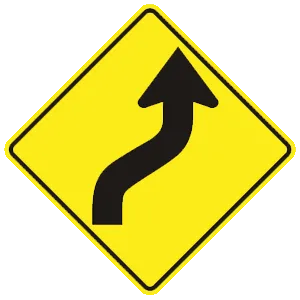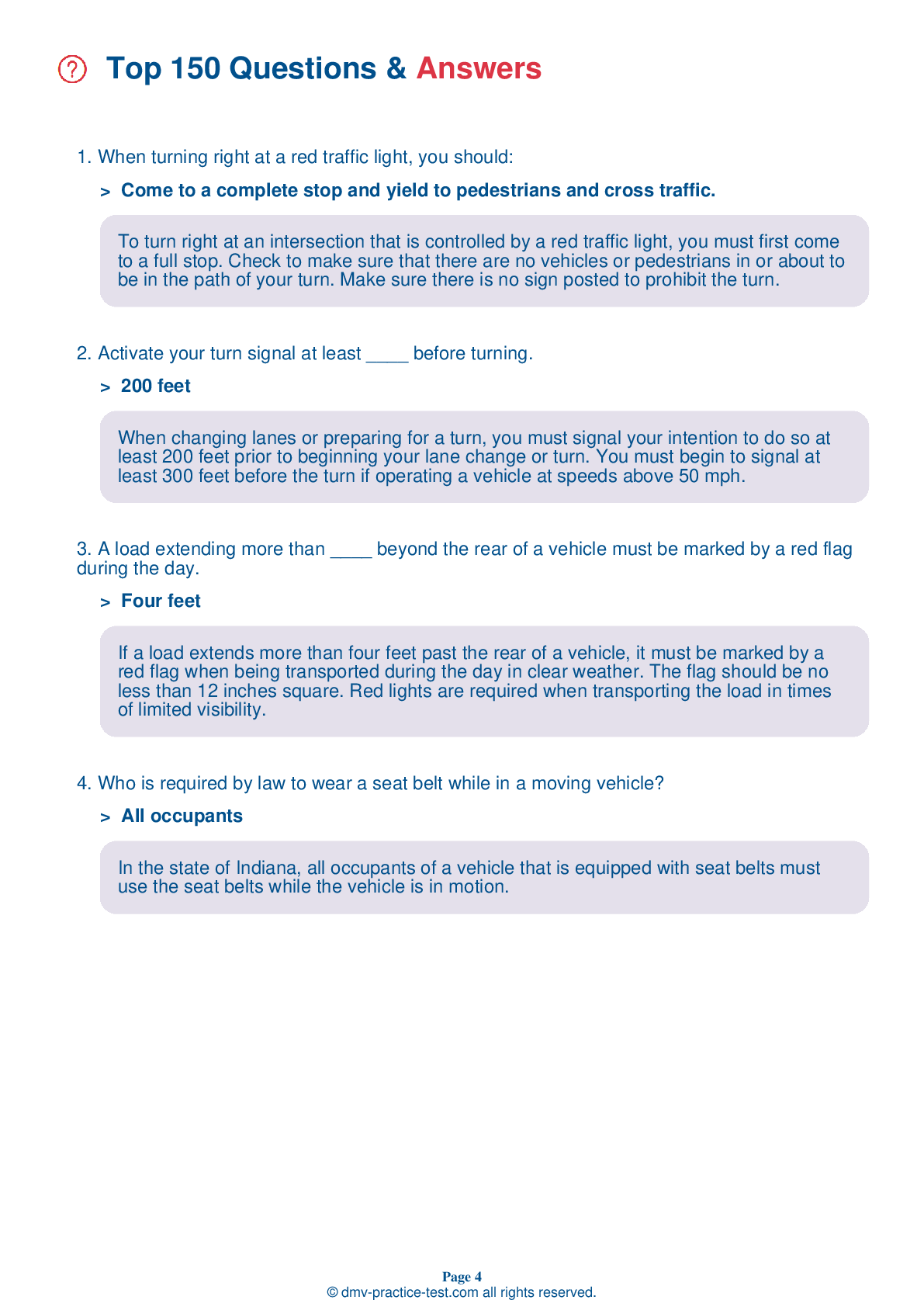FREE Indiana DMV Practice Test #7 Page 5 of 5
This set of Indiana DMV practise tests has been updated for January 2025. It includes questions based on the Indiana Driver Handbook's most significant traffic signals and laws for 2025. Use actual questions that are very similar (often identical!) to the DMV driving permit test and driver's licence exam to study for the DMV driving permit test and driver's licence exam.
On the practise exam, each question gets a tip and explanation to help you remember the concepts. The written component of the official Indiana DMV test will include questions about traffic rules, traffic signs, and driving statutes, as well as information from the Driver Handbook.
To obtain a passing grade, you must correctly answer 44 of the 50 questions. Take our DMV practise exam to help you prepare for your Indiana instruction permit or driver's licence.
The DMV exam is available in several languages.
Using any kind of testing assistance will result in an automatic fail, and the DMV may take additional action against your driver's licence, so stay away from it.
39 . A “No stopping” sign means that, unless directed to do so by a police officer, you may stop only:
A "No stopping" sign means you can only stop to obey a traffic signal, to obey a police officer, or to prevent a conflict with another vehicle.
40 . When changing lanes, you can check your blind spots by:
You should turn your head to check your blind spots before every lane change.
41 . Double solid yellow lines painted down the middle of the road mean:
Double solid yellow lines in the center of the road mean that passing is not allowed from either direction. You may not cross the lines unless you are making a left turn or passing pedestrians, bicyclists, and riders of scooters or skateboards when the opposite lane is clear and you can pass safely.
42 . When entering a highway from an entrance ramp, you should generally:
Entrance ramps for highways often have acceleration lanes. When merging with traffic from an acceleration lane, you should put your signal on, look for an opening in traffic, accelerate up to the speed of traffic, and merge into an opening in traffic.
43 . This sign means:

Construction zones pose dangers to both drivers and construction workers. Orange highway construction signs warn drivers to be careful when encountering construction zones. This sign alerts drivers to the beginning of an upcoming construction zone.
44 . What should you do if your accelerator sticks while you are driving?
If your accelerator sticks while you are driving, keep your eyes on the road. Quickly shift the vehicle into neutral and apply steady pressure on the brake pedal. Pull off the road when it is safe to do so and turn off the engine.
45 . When driving on slick roads, you should:
While it is always dangerous to drive too fast on slippery roads, this is especially true when driving in turns and curves. Be sure to approach them more slowly in slippery conditions than you would under normal circumstances.
46 . This sign means:

Warning signs are used to warn drivers about upcoming hazardous conditions and are usually yellow with black markings. This sign warns drivers that the road ahead curves to the right and then to the left.
47 . When turning or changing lanes, you must:
Always signal your intentions when changing lanes, turning, or pulling away from a curb. Do not allow yourself to become lazy and form the bad habit of not following this law.
48 . What is the appropriate action to take when approaching a railroad crossing that does not have signals to direct traffic?
When approaching an unmarked railroad crossing, slow down and be prepared to stop. Before you cross, be sure that no trains are approaching from either direction on any track. If you see or hear a train coming, stop at a safe distance from the nearest track and wait to proceed until after the train passes.
49 . When driving on an interstate:
Signal, check your mirrors, and check your blind spot before changing lanes or passing on an interstate. Only stop on the shoulder of the interstate in the case of an emergency and change lanes as infrequently as possible. Cruise control should not be used in heavy traffic or under poor weather conditions.
50 . If a green arrow turns into a solid green light, you:
If a green arrow turns into a solid green light, you may still turn in the direction that the arrow was pointing but you must first yield to pedestrians and oncoming traffic.
See the exact questions that will be on the 2025 Indiana DMV exam.
99.2% of people who use the cheat sheet pass the FIRST TIME
LT gives us an insight on how the cheat sheet provided her with all the study questions she needed before taking her test.
Joe initially studied with the handbook and failed his test, he eventually found us online, studied and pass his test the first time around.



